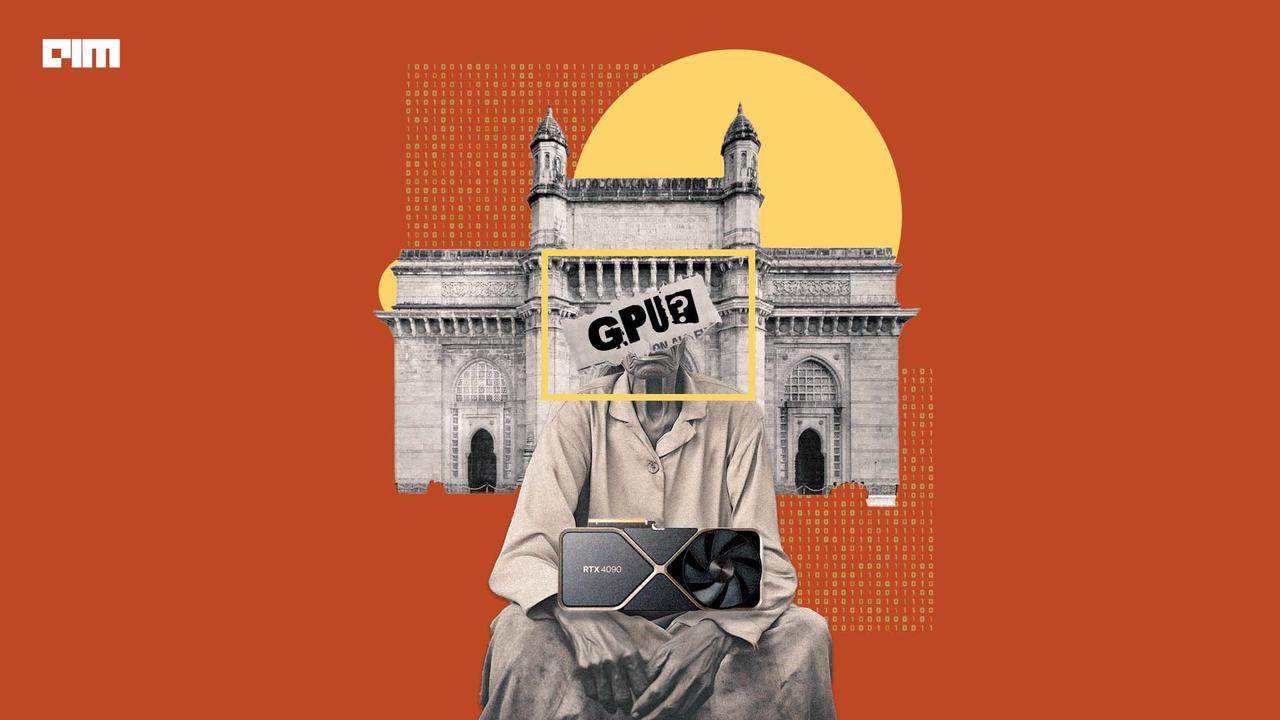India Considers Expanding Compute Capacity to Meet Growing AI Demands
2 Sources
2 Sources
[1]
Govt may allow more compute capacity based on requirement: IT secretary
The government may look at creating more "compute capacity" through viability gap funding after building high-tech capability under the Rs 10,372-crore India AI mission, Electronics and IT Secretary S Krishnan said on Thursday. Addressing a Deloitte India event, Krishnan said that India AI Mission has an outlay of about 10,372 crore of which more than Rs 4,500 crore is intended for compute capacity. Click here to connect with us on WhatsApp "Later on, there is a possibility, and we will decide based on how much compute capacity actually gets created in the country. There is a possibility that we would actually support more compute capacity being created on the viability gap funding," Krishnan said. The government has invited bids for the empanelment of entities for providing artificial intelligence services on the cloud under the India AI mission. Under the IndiaAI Mission, supercomputing capacity, comprising over 10,000 GPUs, will be made available to various stakeholders for creating an artificial intelligence (AI) ecosystem. The rapid development of AI across the globe has led to an increase in demand for GPU-based servers, as they can process data at a higher speed compared to CPU-based servers. Krishnan said the vision is to create capacity in a public-private partnership model. More From This Section Apple to begin selling iPhone 16 from Sep 20; Pro model at Rs 119,900 Tech wrap Sep 19: iPhone 16, Gemini Live on Android, Honor 200 Lite, more Google's plea against CCI order in android mobile case mentioned in SC Grand Theft Auto V listed as unsupported on Valve Steam Deck: Know more With iPhone 16 series, Apple makes it easy to remove and replace components "There are two models that we are attempting. The first one has already launched the RFPs out there, and that is more a voucher base approach where we are asking people who have already created AI compute capacity to make it available to innovators, startups and MSMEs and academic institutions at a subsidised price," He said. Under the India AI mission, the government has proposed to pay up to 50 per cent of the cost by giving vouchers to various institutions and others. He said that the compute capacity is also being created under National Supercomputer Mission (NSM) that will mainly meet public sector requirements. Also Read India on way to becoming third-largest economy by FY31: S&P Global report Modi 3.0 100 days: Commerce ministry takes steps to support MSME exporters Centre asks platform aggregators to register workers on e-Shram portal Infrastructure, agriculture key focus areas of 100 days of Modi 3.0 Govt notifies NaBFID as a public financial institution under Companies Act
[2]
Govt May Tap Into VGF To Create More Compute Capacity: IT Secy
The government's flagship INR 10,372 Cr India AI Mission plans to democratise access to compute power, back AI-powered startups, scale up AI apps, among others Ministry of Electronics and Information Technology (MeitY) secretary S Krishnan has reportedly said that the government may tap into "viability gap funding"(VGF) to create more "compute capacity". As per PTI, he added that the Centre will look at exploring the VGF route once high-tech "compute" capability has been built under the INR 10,372 Cr India AI Mission. For the uninitiated, viability gap funding is a government-backed financial support scheme that helps turn commercially unfeasible projects into reality. Meanwhile, compute capacity simply refers to the computational resources required for artificial intelligence (AI) to perform tasks. Of the total INR 10,372 Cr outlay for the AI Mission, Krishnan said that more than INR 4,500 cr has been earmarked for compute capacity. "Later on, there is a possibility, and we will decide based on how much compute capacity actually gets created in the country. There is a possibility that we would actually support more compute capacity being created on the viability gap funding," the MeitY Secretary reportedly added. Addressing the event, Krishnan said that the government's "vision" is to create compute capacity on a public-private partnership model, adding that the Centre is attempting to build two such models. "There are two models that we are attempting. The first one has already launched the RFPs out there, and that is more a voucher base approach where we are asking people who have already created AI compute capacity to make it available to innovators, startups and MSMEs and academic institutions at a subsidised price," the MeitY Secretary added. It is pertinent to note that the Centre reportedly sought bids for the empanelment of entities to offer AI services on cloud under the AI Mission. Additionally, he said that the compute capacity is also being created under National Supercomputer Mission (NSM), which will cater primarily to the demands of the public sector. The government's flagship IndiaAI Mission aims to create a robust AI ecosystem in India by democratising access to compute power, developing indigenous AI capabilities, backing AI-powered startups, scaling up AI applications across industries, among others. To fuel this, the Centre plans to procure 10,000 GPUs, which will be made available to various stakeholders including startups, MSMEs and institutions at subsidised rates. Under the mission, Indian authorities have proposed to pay up to 50% of the GPU cost by giving vouchers to various institutions and others. At the heart of all this is the ongoing AI boom, which has gripped India. The country is home to more than 100 startups that have raised more than $600 Mn in funding between 2019 and H1 2024.
Share
Share
Copy Link
The Indian government is exploring options to increase compute capacity for AI development. IT Secretary S Krishnan suggests potential use of viability gap funding and collaboration with private sector to meet the growing demand.

Government's Stance on Compute Capacity Expansion
The Indian government is actively considering measures to expand the country's compute capacity in response to the growing demands of artificial intelligence (AI) development. S Krishnan, the IT Secretary, has indicated that the government is open to increasing compute capacity based on specific requirements and exploring various funding mechanisms to achieve this goal
1
.Viability Gap Funding as a Potential Solution
One of the key strategies under consideration is the use of viability gap funding (VGF) to support the creation of additional compute capacity. This approach could help bridge the financial gap and make projects more feasible for private sector involvement. Krishnan emphasized that the government is open to examining different models, including VGF, to facilitate the expansion of compute infrastructure
2
.Collaboration with the Private Sector
The IT Secretary highlighted the importance of collaboration between the government and private entities in addressing the compute capacity challenge. He stated that while the government has already taken steps to enhance capacity, there is a recognition that partnering with the private sector could lead to more efficient and scalable solutions
1
.Current Initiatives and Future Plans
The government has already initiated efforts to boost compute capacity, with the Centre for Development of Advanced Computing (C-DAC) working on developing indigenous chips and setting up a 16 petaflop AI supercomputer. However, Krishnan acknowledged that these measures might not be sufficient to meet the rapidly growing demand in the AI sector
2
.Related Stories
Industry Perspective and Demand
The tech industry in India has been vocal about the need for increased compute capacity to support AI development. Companies have expressed concerns about the current limitations and the potential impact on India's competitiveness in the global AI landscape. The government's openness to expanding capacity is seen as a positive response to these industry concerns
1
.Balancing Act: Meeting Demand and Ensuring Sustainability
As the government considers various options for expanding compute capacity, there is a clear emphasis on finding sustainable and efficient solutions. The potential use of VGF and collaboration with the private sector indicates a strategic approach to balance the immediate need for increased capacity with long-term sustainability and economic viability
2
.References
Summarized by
Navi
[1]
Related Stories
India Nears Finalization of Homegrown AI Models Under IndiaAI Mission
05 Apr 2025•Technology

India Boosts AI Infrastructure: 14,000 Additional GPUs to be Procured Under IndiaAI Mission
23 May 2025•Technology

India's AI Mission Receives 18,000 GPU Bids in Second Round, Boosting Indigenous AI Development
07 May 2025•Technology

Recent Highlights
1
Google launches Gemini 3 Flash as default AI model, delivering speed with Pro-grade reasoning
Technology

2
OpenAI launches GPT Image 1.5 as AI image generator war with Google intensifies
Technology

3
OpenAI launches ChatGPT app store, opening doors for third-party developers to build AI-powered apps
Technology





